This piece was written during the 2023 WGA and SAG-AFTRA strikes. Without the labor of the writers and actors who are currently on strike, movies like Barbie one would not be possible, and Autostraddle is grateful for the artists who do this work.
Whenever I love something, and I mean deeply love it, I have an unspeakable nerdy urge to … tear it apart into bits and learn everything I possibly could on the subject. That’s what lead us to our new biweekly series Queer Syllabus, and this week we are diving into Barbiecore. Grab a pink floatie and join us? 🎀
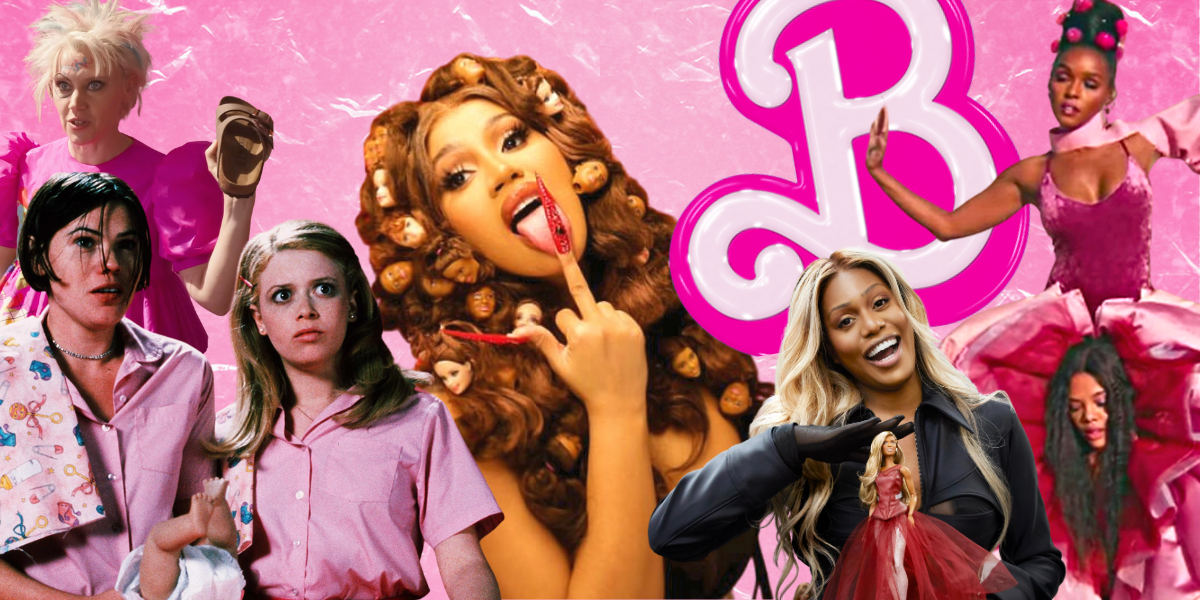
After months of anticipation, Barbie The MovieTM The ExperienceTM is finally here and as a lifelong member of Club Pink (no seriously, I had over 50 Barbies as child and slept in a cotton candy pink bedroom between the ages of 11 and 18 by choice), I cannot wait.
For today’s lesson plan, we are going to split the syllabus into three parts: Barbiecore Aesthetic, Barbiecore and Queer Femme Theory, and finally Barbiecore Capitalism (that is, the movie, the dolls, and the money of both).
Overlapping topics we will discuss include the history of glitter, queer meanings of femme and femme theory, Rainbow Capitalism, why gays love Earring Magic Ken, pink vs pynk, and more! Alright nerds! Are you buckled in? C’mon Barbie let’s go party, etc etc.
“Pink Is My Favorite Part”: A Queer Barbiecore Aesthetic

On one hand, the aesthetic of Barbiecore is pretty easy to understand at face value: it’s pink, from blush to hot pink and all the hues in between! But before we dig into the nuances of queer Barbie aesthetics, let’s take a step back and ask ourselves “do I even know what the word ‘core’ means?” If you’re chronically online, you’ve probably seen everything from Cottagecore to Mermaidcore or even Rom-com Core — but have you wondered where the word comes from?
“A ‘core’ is a niche fashion trend, often born from social media, that revolves around a very specific visual aesthetic,” Brenda Otero, Lyst’s cultural insights manager, told Rivet in 2022. You can also read more about ‘core’ aesthetics in this delightful Vogue takedown that argues we shouldn’t use the word at all (ironically, the article is centered around Barbiecore! though that isn’t why I picked it). Alas, we are one with the internet and ‘core’ is the language of our people — and so that is what we will use.
With that lil vocab lesson out of the way, let’s talk more about various Barbie aesthetics across queer time and place.
Barbiecore and its History
“The Barbiecore aesthetic is in many ways ironic, deliberately excessive, even irreverent. It sort of expresses the desire for joy and lightness that is shared by everyone after the health emergency of Covid-19 and all the current events that are brutally changing our lives.
… It aims to become an ode to feminism, to beauty, to diversity, to inclusion. To break down stereotypes and prejudices (no, pink is not a girly colour). Add years of battles for emancipation and inclusion to the present feeling and you find yourself with an increasing number of women who, in contrast to the past, returned to explore hyperfemininity as an act of resistance against a culture that considered everything remotely feminine to be weak.
The Barbiecore aesthetic also draws from drag and queer culture. It does not want us all white, thin, blonde and blue-eyed. Barbiecore is for people of different sizes, colors, genders and backgrounds, it inspires people to break out of the mold to wear (and be) whoever they want.”
That definition comes from LAPP Magazine’s Why We Fell In Love With The Barbiecore Aesthetic.
You can also read a detailed timeline of Barbiecore dating back to the original 1959 dolls in TIME’s The Long, Complicated, and Very Pink History of Barbiecore.
And ArtReview explores The Politics of Barbiecore going from Killing Eve’s Villanelle to 2017’s Pink Pussy Protest Hats (a swerve that I did not see coming!), plus an appropriate amount of cynicism towards Mattel’s drastic change in messaging away from “their claim that Barbie’s unrealistic, highly problematic and potentially damaging proportions were simply to make the doll easier to dress, an argument they were still promoting as recently as 2014.”
✨ On Glitter ✨
I just deeply believe you can’t talk about queer Barbies without talking about glitter.
My Love for Glitter and Openly Expressing My Queer Sexuality Go Hand-in-Hand. A queer writer talks to nine other LGBTQ+ people about the role that glitter has played in their lives.
Inside the Fascinating History of Glitter and Gay Culture, honestly I could have written an entire article just on this subject! This one touches on drag queens’ use of glitter dating back to the 1930s-1960s, but I really wanted to highlight the use of glitter in queer protest and activism. Pay close attention to the use of purple glitter in religious activism by Parity and the infamous (but short-lived) glitter bombing of extremist right-wing politicians in the 2010s. See also: The History of Using Glitter As a Symbol of Protest from Teen Vogue.
Watch
OK I recently rewatched But I’m a Cheerleader on a plane and you cannot tell me that this queer classic is not, at its root, also Barbiecore. You can stream it on Prime Video (for free, if you have a subscription).
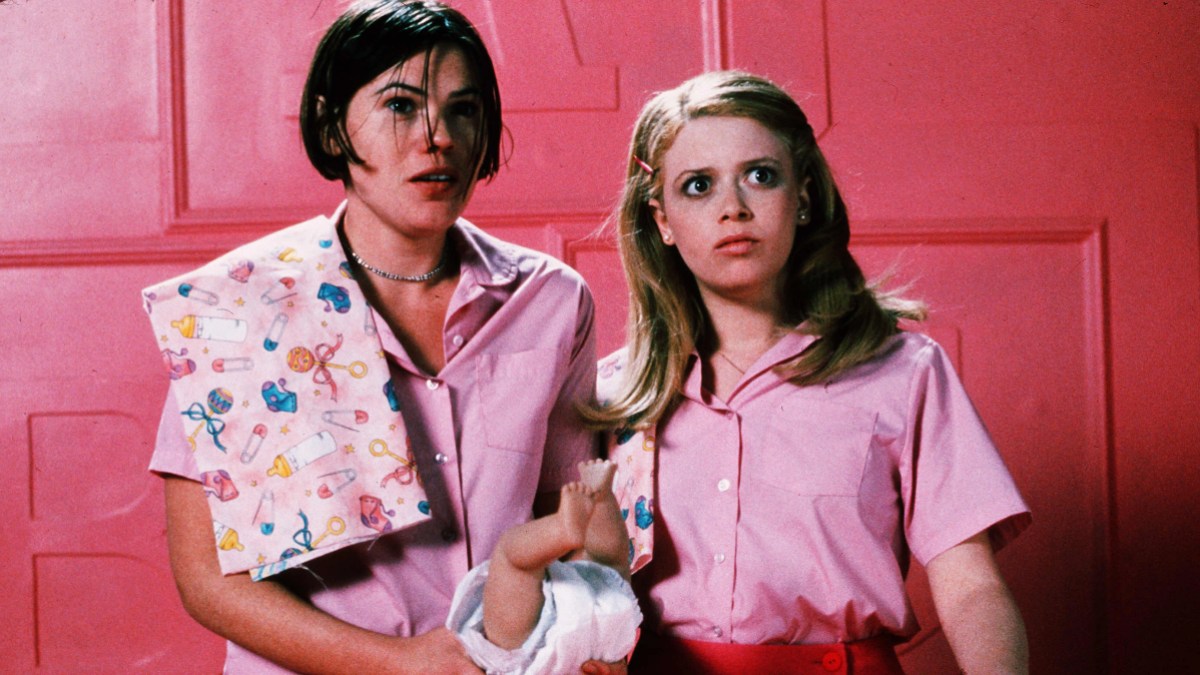
Once you’ve finished watching, don’t forget to also read this 2020 interview between director Jamie Babbit and Drew Gregory for Autostraddle: Jamie Babbit on “But I’m a Cheerleader,” Barbie Sex, and Getting Bad Reviews
Listen
These listens are also both “watches” because… aesthetics. But first I am obviously going to recommend Janelle Monaé’s 2018 “Pynk” video.
And once you’re done, you can read my review of it from back in ’18: Janelle Monáe’s Queer “Pynk” Music Video Is Here To Wreak Havoc On Your Heart and Body and also Dr. Omise’eke Natasha Tinsley’s The Color Pynk: Black Femme Art for Survival, the intro chapter is titled “Femme-inist Is to Feminist as Pynk Is to Pink” and how could you not want to read that?? (we profiled Dr. Tinsley’s work earlier this year).
Next is Cardi B’s “Up” music video.
There are talking Barbie dolls sewn into her wig!!!!
“It’s Barbie, Bitch, if You Still in Doubt”: Barbiecore and Queer Femme Theory
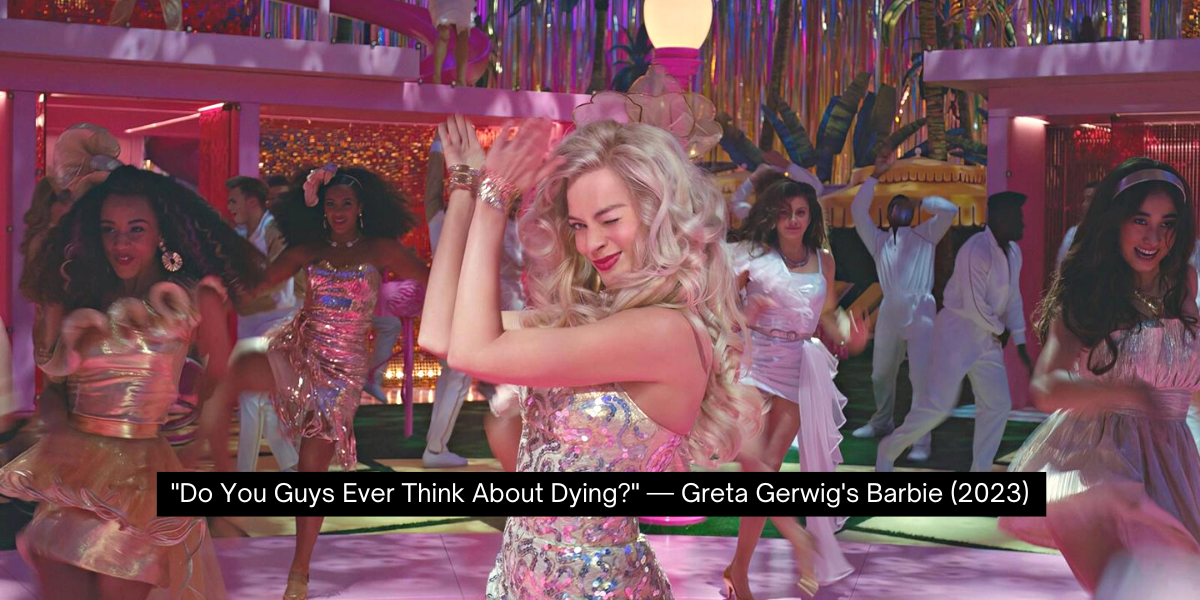
You didn’t think we’d talk about queer Barbiecore without talking about femmes, did you?
“I came to Femme as defiance through a big booty that declined to be tucked under, bountiful breasts that refused to hide, insolent hair that can kink, and curl, and bead up, and lay straight all in one day, through my golden skin, against her caramel skin, against her chocolate skin, against her creamy skin. Through rainbows of sweaters, dresses, and shoes. Through my insubordinate body, defying subordination, incapable of assimilation, and tired, so tired of degradation. Through flesh and curves, and chafed thighs which learned from my grandma how Johnson’s Baby Powder can cure the chub rub. Through Toni Morrison, and Nella Larsen, and Audre Lorde, and Jewelle Gomez who, perhaps unwittingly, captured volumes of black femme lessons in their words. Through Billie Holiday who wore white gardenias while battling her inner darkness. Through my gay boyfriend who hummed show tunes and knew all the lyrics to ‘Baby Got Back,’ which he sang to me with genuine admiration.”
That comes from Sydney Fonteyn Lewis, who wrote those words as part of an essay in the anthology Hot & Heavy: Fierce Fat Girls on Life, Love & Fashion (edited by Virgie Tovar), which obviously I recommend on its own! But I also wanted to talk about how Lewis uses this excerpt to explore Toni Morrison’s Sula in the academic article “‘Everything I Know About Being Femme I Learned From Sula”or Toward a Black Femme-inist Criticism’” from the online journal Trans-Scripts. It’s a careful read that will require all your attention, but worth your time.
Meanwhile, VICE explored what happens when “femme” gets co-opted outside of queer spaces and nearly everyone on the internet has a roundtable of femmes discussing what that identity means to them, so I’m just going to go ahead and link our own because we did it best (I’m kidding, I’m kidding).
Watch
Again, what femme “means” is, in a lot of ways, objectively personal. If you ask 50 different queer femmes how they’d define it, you’d get at least 30 different answers. I recommend exploring the history with British Black trans model and advocate Munroe Bergdof.
Listen
Dr. Rhea Ashley Hoskin is a Canadian interdisciplinary feminist sociologist whose work focuses on Critical Femininities, Femme Theory, and femmephobia. In this 2022 episode of the podcast The Sensual Revolution, she talks more about her work, Femme Theory, and its applications ranging from studying the role that femmephobia plays in gender-based violence to femme invisibility in queer culture.
Just for Fun
Gays drunk at 2am on the dancefloor while Robyn “Dancing On My Own” plays pic.twitter.com/opHXv99XzA
— 💫 (@heyjaeee) May 25, 2023
“Life in Plastic, It’s Fantastic”: Barbiecore Capitalism
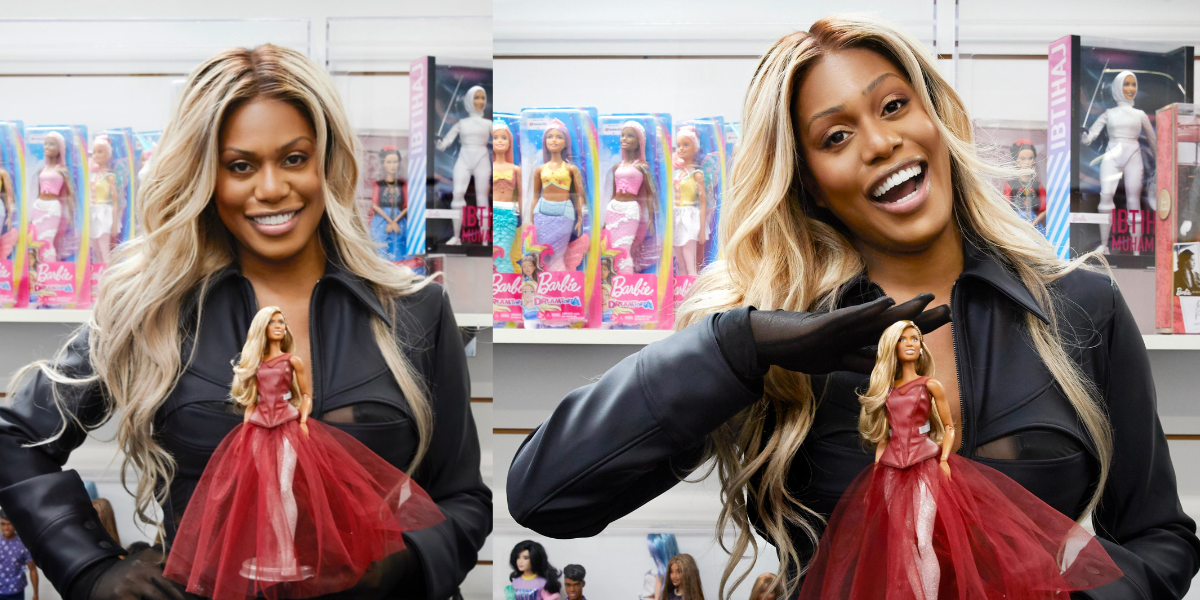
Photos by Elizabeth Braunstein for Mattel.
We can talk a lot about “reclaiming pink aesthetics” (and I can, do, and will!) — but also it’s worth remembering that Mattel is a corporation with a net worth of roughly $7.46 billion (yes that’s Billion with a B) dollars. Barbies are made to be bought. Barbies have also held a lot of emotional meaning. There’s a productive tension there, and I want to explore it’s impact!
Barbie, the Doll
The first thing I simply have to talk about here is actually not about Barbie herself — but the queer history of Earring Magic Ken. Oh what, you may ask?? Oh YES! When Mattel Said ‘No Homo’: How Earring Magic Ken Became an Accidental Queer Icon. With his lilac vest, he is also known as “Cock Ring Bottom Ken” depending on who you ask. His rise to fame overlaps with the early 90s, the mainstream-ification of Voguing, and the brief moment where HIV/AIDS finally became recognized as a national health crisis. Sadly by 1993, he had already found his way to Doll Heaven but we remember him for who he is: A legend.
While we are talking about gay Kens, let’s bring back an Autostraddle work that will one day certainly live in a museum for it’s pitch perfect cultural ephemera: 75 Lesbian Ken Dolls, Ranked By Lesbianism and it’s partner piece Your “Lesbian Ken” Community Photo Gallery.
With all that Ken business out of the way, let’s also talk about perhaps the most famous LGBT Barbie in recent years. In 2022, Barbie announced that, as a part of their “Tribute Collection,” the first trans Barbie would be modeled after Laverne Cox. Though we can assume Mattel did not do this intentionally, there’s also a nice thread here where — relevant to this syllabus — some Black trans women call each other “dolls” as a term of endearment. Laverne Cox’s Barbie was released right before her 50th birthday and if you think she celebrated with a Barbie themed party… you are gotdamn right.
Using both (accidental) gay icon Earring Magic Ken and (very real) trans and queer icon Laverne Cox, we’re asked to think about Barbie’s role in Rainbow Capitalism and the queer lenses that we place on the doll. I recommend starting that journey with this short piece, Beyond Rainbow Capitalism: Barbie Through The Queer Eyes.
Often when we’re talking about capitalism — especially in queer spaces — we are talking about the evils thereof. And I am not advocating for or defending the ills of capitalism here, but there are so many interesting explorations of Barbie and her meaning, none of which can be separated from capitalism itself. Earlier this week, I stumbled across this Twitter thread that compared Barbie’s wheelchair to someone in the real world.
barbie’s wheelchair vs my actual wheelchair: a critical comparison
aka the best twitter thread i will ever post
strap in#Barbie pic.twitter.com/k1nhWLE2IO
— Katie Pennick (@KatiePennick) July 19, 2023
Barbie, the Movie
All of this brings us to Barbie The MovieTM the real reason that we are all gathered here today. Greta Gerwig has set out to create a movie that both satires the pink capitalist, patriarchal structure that gave us over 60 years worth of Barbies and simultaneously create a loving homage to it — does she pull it off? I have no idea.
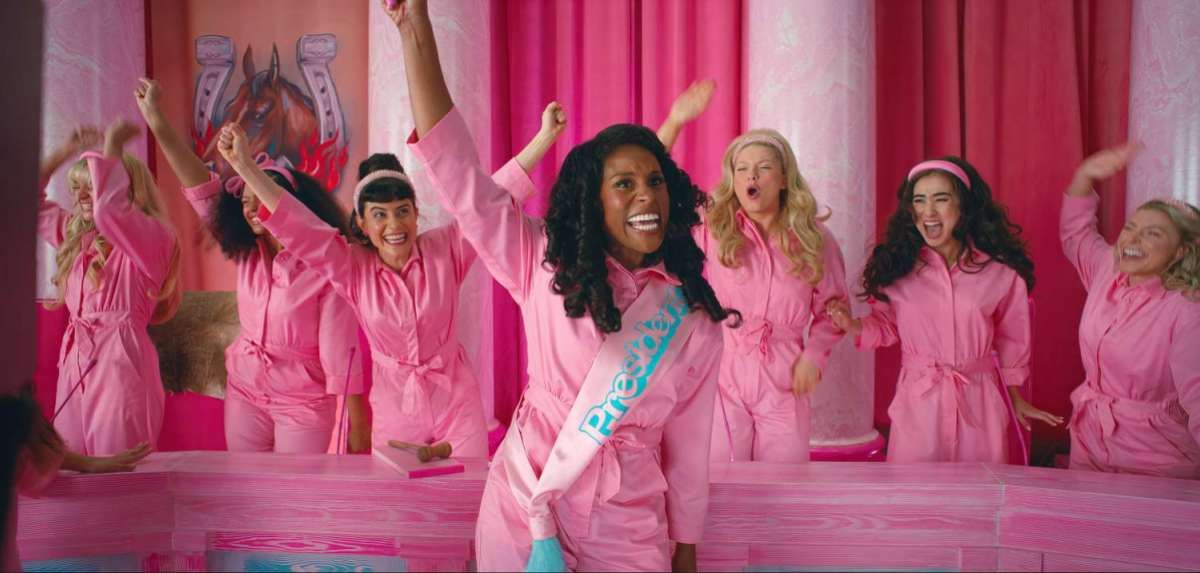
Greta Gerwig’s ‘Barbie’ Dream Job is a New York Times feature about the tensions of creating “art” for corporate dollars. I’d consider must read material before (or after!) seeing the movie — they provide audio accompaniment, so I listened while doing dishes.
Hari Nef spoke with Out Magazine about growing up playing the Barbie’s Magic Hair Styler video game and why, though she understands the importance of being cast as a Barbie as a trans actress, she doesn’t see this is as case of cut and dry ‘representation’: “Barbies are Barbies, they’re not human women. They’re dolls. They don’t have genitalia.”
It’s worth noting that even if Nef doesn’t see her role as a “trans Barbie” per se — the right-wing machine’s trans panic over the Barbie movie has skyrocketed as we’ve gotten closer to the premiere.
Ultimately, all of this leaves us someplace muddled! I tried not to dig too deeply into movie reviews for this syllabus, but I think Aisha Harris for NPR sews together a lot of the same themes I’ve been most interested in exploring:
“Stereotypical Barbie is rendered exactly as her name suggests: blond, thin, [presumably] straight, and Margot Robbie … i.e., the first image that likely comes to mind when anyone thinks of Barbie, as she herself proudly admits early on. Pointing this out is subversive, to a point. For all the brand’s exaltations about representing everyone – in recent years, to combat plummeting sales, Mattel has expanded the doll’s shapes, shades, and facial features – the movie is also admitting that the symbol that still looms large is white and supermodel-esque…. Yet Barbie’s limitations as a vehicle for substantial commentary are two-fold. For one, the execution is sometimes awkward, like a long, stilted monologue about how ‘impossible’ it is to be a woman because, The Patriarchy.
The other rub is inherent – critique can only mean so much when the entity under the microscope also happens to be the one writing (and cashing) the checks.”
Is ‘Barbie’ Corporate Propaganda or Malibu Metacommentary™? Why Not Both! The last word of the day.
That’s it! Class dismissed!



Would be worth mentioning Ann Ducille’s essay “Toy Theory: Black Barbie and the Deep Play of Difference” here, for readers that want to dig into the academic cultural studies work out there.
Yes! I had a few more academic texts that I cut because… well, accessibility to materials can be pricey. But I hadn’t run across Ducille’s work! What a great addition!
Ahhhhh!!!! My inner nerd (aka my whole self) is so excited for this column. And what a fantastic first entry, too.
Professor Queermo!! Thank you! I’m also looking forward to it! Eeek
I dunno if you are listening to it, but the one of the L.A. NPR stations has a podcast called L.A. Made. This current season is called The Barbie Tapes, where it is about the history of Barbie, its creator & the people involved. Includes old school interviews with Barbie’s semi-creator Ruth Handler. It’s been a good listen so far.
Very cool!
Oh I am so ready for this column! I feel like I’m the last person left who’s just neutral on Barbie but I love the style of this
Neutrality is a-ok! Thank you Katie, I’m glad the format worked for you — I was definitely stressing it, haha.
Thank you for the fantastic primer into pink, Carmen. You seamlessly tied all the aesthetic themes into further research and I can’t wait to start going through the syllabus. This is extremely helpful for my current art piece and puts into words the creative decisions that I’ve been making.
This is gonna be an amazing series!
Viv — you have know idea how much this means coming from you, specifically. Thank you. 💚
So excited for this Queer Syllabus series!! This Barbie Syllabus is everything, I can’t wait to read it all. (And I love that you included my profile of Dr. Tinsley’s The Color Pynk in here, thank you Carmen!! 🥹🥹🥹)
If I may *humbly* add: Various queer and feminist artists and activists have used Barbie to critique gender norms in their work over the past few decades. One of the first films by Todd Haynes (director of Carol!), Superstar: The Karen Carpenter Story, uses Barbies as actors to convey the horrors of stardom, sexism, and anorexia. Its weird and disturbing and experimental and you can watch it on YouTube: https://www.youtube.com/watch?v=FmY5mTmrsVI. Also the art/activist group the Barbie Liberation Organization hacked a bunch of Barbies and GI Joes in the early 90s in order to switch their voice boxes and draw attention to binary and harmful gender roles reproduced by the dolls: https://www.mentalfloss.com/article/547659/barbie-liberation-organization-gi-joe-hacked. I’m sure there’s lots more I don’t know about!
TL;DR, there’s a long history of queer and feminist art incorporating/critiquing Barbie, I think this movie is the latest example of this!
I loooove these additions!! Thank you Lauren!